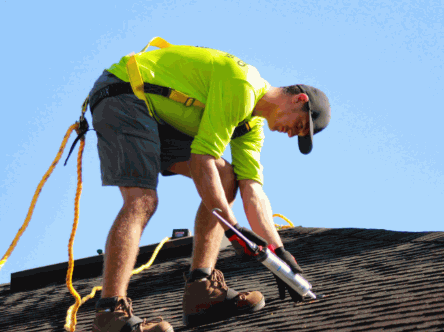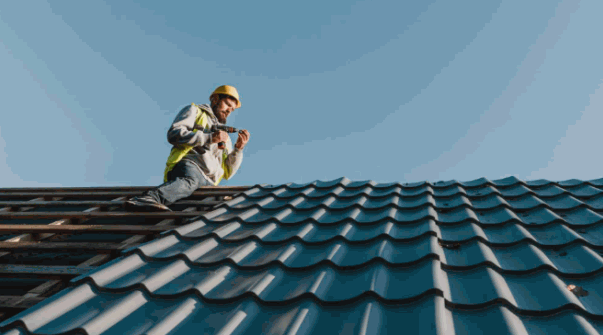Table of Contents
A leaking roof can result in significant damages and lead to expensive repairs, underscoring the importance of understanding its causes and identifying the signs associated with it. Common factors that contribute to roof leaks include the age of the roof, damaged shingles, clogged gutters, and improperly installed skylights. Additionally, ice damming leaks and chimney leaks can also be common roof leaks that homeowners should be aware of. It is crucial to recognise the indicators that signify the presence of a leak and to implement practical measures to prevent roof leaks from occurring, thereby ensuring that your home remains dry and protected. Regular roof maintenance and timely roof repair are essential homeowner tips to fix leaking roofs.
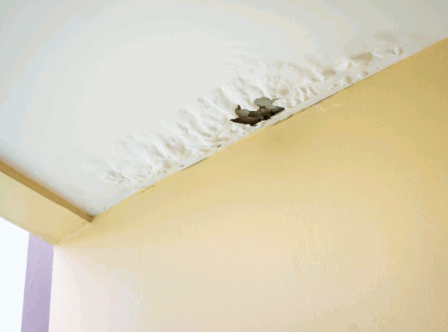
What Causes A Roof To Leak?
Understanding the causes of roof leaks is essential for homeowners aiming to maintain the integrity of their residential roofing systems and prevent costly repairs. A proper understanding of roofing solutions and timely intervention with roofing products can significantly reduce roof damage.
Several common factors contribute to this issue, including the age of the roof, which can result in wear and tear over time; damaged or missing tiles that expose the underlying structure; blocked gutters that may cause water to back up and infiltrate the roof; and inadequate installation of roofing materials, such as improperly installed roof lights and failures in pipe boots.
Additionally, issues related to roof flashing problems and deteriorating waterproof barriers can further exacerbate leaks, underscoring the significance of quality workmanship and materials within the roofing industry. Improperly driven nails and pipe boot failure are also critical factors to consider.
Age Of The Roof
The age of a roof is a critical factor influencing its vulnerability to leaks and overall damage, as roofing materials inherently deteriorate over time.
Homeowners should recognise that different roofing materials have varying lifespans, which directly affects their likelihood of experiencing leaks. The correct choice of roofing solutions from a reliable building supply company can extend the lifespan and prevent early roof damage. For example, asphalt shingles typically last between 15 to 30 years, whereas metal roofs can endure for over 50 years. This variation underscores the importance of conducting regular roof inspections and maintenance, practices that can significantly extend the lifespan of a roof.
Indicators of ageing materials may include curling shingles, discolouration, and noticeable granule loss, which suggest that it is time to assess the roof’s integrity. Upon observing such signs, it is advisable to consult a roofing professional.
In conclusion, making informed decisions regarding roof replacement is essential for protecting a home from potential extensive water damage.
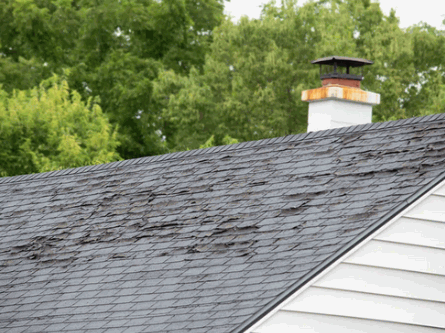
Damaged Or Missing Shingles
Damaged or missing tiles represent one of the most prevalent causes of roof leaks, as they allow water to penetrate the roofing materials and compromise the underlying structure.
Adverse weather conditions, such as heavy rain, snow, and high winds, can significantly accelerate the deterioration of roofing tiles, rendering them brittle or causing them to detach entirely. Additionally, improper installation can exacerbate these issues; tiles that are not adequately aligned or secured may create further vulnerabilities. If compromised tiles are not addressed promptly, the consequences can escalate rapidly, potentially leading to extensive water damage and costly repairs to the interior of the home.
To effectively address leaking roofs, one should consider the following measures:
- Conduct regular inspections to promptly identify any damaged or missing tiles.
- Replace any compromised tiles immediately to prevent further damage.
- Ensure that proper installation techniques are adhered to in order to maintain the long-term integrity of the roof.
Timely roof repair is essential, as it helps to safeguard the overall health of the structure and prevents more significant issues in the future. It is important to remember that the sooner repairs are undertaken, the lesser the risk of extensive damage.
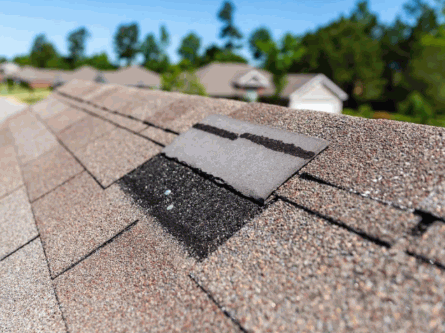
Clogged Gutters
Clogged gutters filled with debris can result in significant roof leaks, as they impede proper water drainage and may cause water to back up onto the roof and into the house.
Over time, this accumulation can create an ideal environment for mould and mildew, which may compromise the integrity of the roofing materials. Homeowners often underestimate the importance of maintaining clear gutters; however, this straightforward task can prevent costly repairs in the future. Neglecting gutters may cause water to back up and lead to ice dam formation, further complicating roof maintenance.
To mitigate the risks associated with blocked gutters, it is advisable to implement the following measures:
- Conduct regular inspections, ideally every season, to check for the buildup of leaves, twigs, or other debris.
- Install gutter guards to minimise debris entry and reduce maintenance frequency.
- Ensure that downspouts are directed away from the foundation to prevent water pooling.
Additionally, regular roof maintenance and inspections are equally critical, as they can help identify vulnerabilities early and address any potential leaks resulting from gutter issues before they escalate.
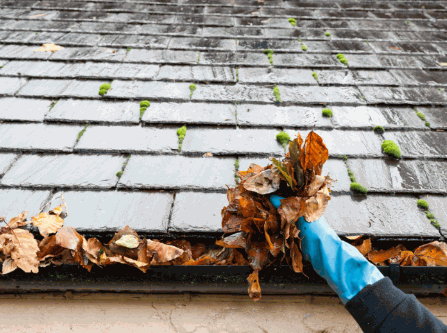
Poor Installation
The improper installation of roofing materials, such as inadequately installed skylights or failures in pipe boots, can result in significant roof leaks and damage, ultimately affecting the structural integrity of the home.
Several factors, including the type of roofing material selected and the expertise of the contractor, directly impact the longevity and durability of the roof. Engaging qualified roofing contractors is essential, as they possess the knowledge and experience necessary to mitigate common risks associated with roofing installation.
Homeowners should take the following considerations into account when selecting roofing solutions and materials:
- Material Quality: Investing in high-quality materials can significantly reduce the likelihood of leaks.
- Local Climate: Various materials exhibit different performance levels based on weather conditions, making it imperative to choose an appropriate option.
- Contractor Credentials: Verifying licenses, insurance, and references is crucial to ensuring that the contractor is reputable and skilled.
By considering these factors, homeowners can enhance the resilience of their roofs against potential damage.
What Are The Signs Of A Leaking Roof?
Identifying the signs of a leaking roof at an early stage is crucial for homeowners to address issues promptly and mitigate further damage.
Common indicators include water stains on ceilings or walls, which may signify a significant roof leak, as well as damp or musty odours in the attic or crawlspace, suggesting potential hidden water intrusion.
Visible water dripping or the presence of puddles within the home are clear indicators that immediate action is necessary to rectify a leaking roof. Additionally, sagging or bulging areas on the ceiling may point to extensive water damage that requires the expertise of a professional.
Water Stains On Ceiling Or Walls
Water stains on ceilings or walls are among the most visible indicators of a roof leak, often signifying that water has penetrated the roofing materials and caused damage.
When water damage is detected, it is essential to assess the full extent of the issue as promptly as possible. This assessment should commence with a comprehensive inspection of the stained area, searching for any indications of mould or structural deterioration. Homeowners are advised to:
- Investigate the surrounding areas for additional stains.
- Measure moisture levels with a moisture metre.
- Examine the roofing and flashing for any cracks or missing materials.
Taking immediate actions, such as drying the affected area and employing fans or dehumidifiers, can significantly mitigate further damage. It is imperative to address the source of the leaks; consulting with a roofing professional may be necessary to perform the required repairs and ensure long-term structural integrity. A professional inspection can identify issues like chimney leaks or improperly installed skylights, ensuring comprehensive waterproofing.
Failing to address the underlying cause could result in more severe water infiltration, increasing both potential damage and repair costs.
Learn more: How To Stop Ceiling Paint From Peeling
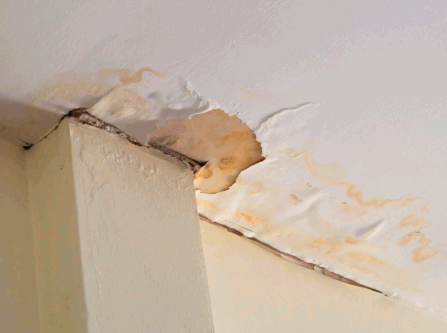
Damp Or Musty Odours
Damp or musty odours in the attic or crawl space can serve as strong indicators of concealed roof leaks, suggesting the presence of mould growth or moisture accumulation that requires immediate attention. These unpleasant odours often point to an underlying moisture issue that not only compromises structural integrity but also poses significant health risks to occupants, particularly those with respiratory conditions or weakened immune systems.
To effectively investigate the source of these odours, it is imperative for homeowners to conduct a comprehensive inspection, searching for signs of water ingress, damaged roofing materials, or compromised insulation. Regular inspections can assist in identifying potential issues before they escalate, thereby ensuring that the living environment remains safe and healthy.
Mould spores can prosper in damp environments, resulting in various health concerns such as asthma, allergies, and other respiratory conditions. Consequently, homeowners should prioritise adequate ventilation in both attics and crawl spaces to minimise moisture buildup. Suggested measures include:
- Checking for leaks in plumbing and roofing.
- Ensuring proper airflow by utilising vents or fans.
- Considering the use of dehumidifiers in areas with high humidity.
By implementing these preventative measures and addressing moisture issues promptly, homeowners can significantly reduce the risk of mould proliferation and foster a healthier living environment, ensuring effective home maintenance.
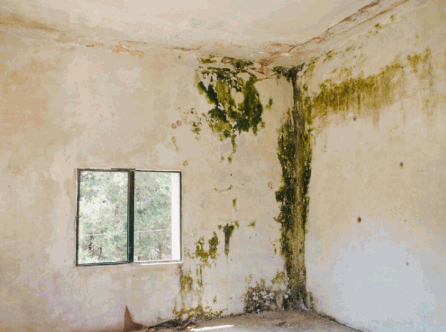
Visible Water Dripping Or Puddles
Visible water dripping or the presence of puddles within the home are clear indicators of a significant roof leak, potentially affecting areas like the roof valley, and necessitate immediate action to mitigate further water damage.
It is imperative to assess the extent of the leakage and identify potential causes, as this information will inform your emergency response. Begin by inspecting the area where water has pooled; examine the ceiling, walls, or roof for any visible cracks or damage.
- Take necessary precautions to protect yourself from electrical hazards, particularly if water is in proximity to sockets.
- Have buckets or towels readily available to catch dripping water and contain any spillage.
- If safely accessible, inspect the loft for any signs of moisture or mould, which may suggest more extensive issues related to inadequate roofing maintenance.
Upon completing a preliminary assessment, it is advisable to contact a roofing contractor who specialises in urgent repairs to discuss the situation. They will provide guidance on the best course of action and offer estimates for the repairs needed to prevent further damage.
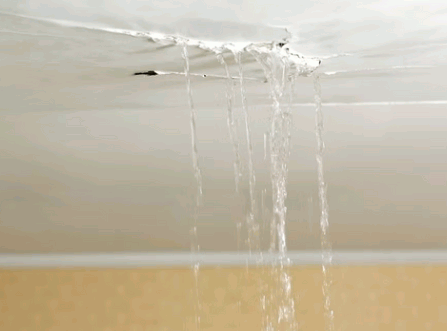
Sagging Or Bulging Areas On Ceiling
Sagging or bulging areas on the ceiling are significant indicators of water damage and potential structural issues resulting from prolonged exposure to leaks.
These concerning signs not only suggest immediate water intrusion but may also pose substantial risks to the overall integrity of the house. If left unaddressed, such issues could lead to more severe consequences, including mould growth, pest infestations, and even hazardous ceiling collapses. Therefore, it is imperative for homeowners to take prompt action.
- First, homeowners should quickly assess the damage and identify the source of moisture.
- Next, it is highly advisable to consult with professional roofing specialists, as they possess the necessary expertise to conduct comprehensive evaluations.
Engaging with these professionals can ensure that appropriate repairs are made, ultimately safeguarding both the property and its occupants.
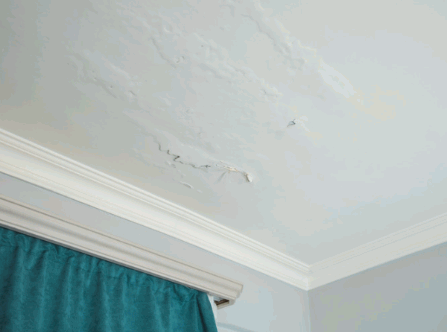
How To Prevent Roof Leaks?
Preventing roof leaks is crucial for maintaining a secure and dry home, and homeowners can implement several proactive measures to protect their roofs.
Conducting regular roof inspections is essential for identifying potential issues at an early stage while maintaining clean and debris-free gutters preventing debris in gutters and ensuring proper water drainage. Homeowners should also consider trimming overhanging tree branches to reduce the risk of damage, and they must promptly repair any damaged or missing tiles.
Furthermore, ensuring adequate ventilation in loft spaces and considering the installation of waterproof membranes can significantly enhance protection against leaks, thereby ensuring that roofs remain in optimal condition.
Regular Roof Inspections
Regular roof inspections are an essential aspect of preventing roof leaks, enabling homeowners to identify and address potential issues before they develop into costly repairs.
Conducting these evaluations at least twice a year, preferably in the spring and autumn, can significantly enhance the longevity of the roof. During each inspection, it is crucial to examine for signs of wear, such as missing tiles, damaged flashing, and any accumulation of debris that may trap moisture. Additionally, inspecting the gutters and downpipes to ensure they are clear is vital, as this facilitates proper drainage.
Homeowners often benefit from engaging professional roofing contractors, as these experts not only possess specialised knowledge and experience but are also adept at identifying subtle issues that may otherwise go unnoticed.
- Thorough assessments increase safety.
- Extend the lifespan of the roof.
- Provide peace of mind.
Committing to regular inspections can protect the home from future storms, ensuring that the roof remains resilient and functional.
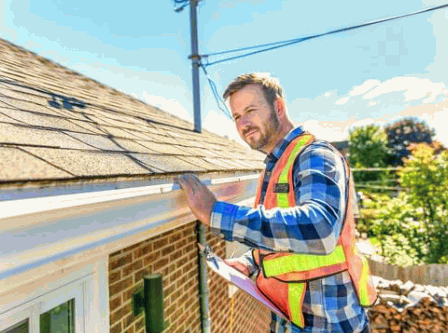
Keep Gutters Clean And Free Of Debris
Maintaining clean and unobstructed gutters is crucial for preventing roof leaks, as clogged gutters can lead to water backing up and overflowing onto the roof.
Regular gutter maintenance ensures that rainwater flows unobstructed, thereby safeguarding your home from potential water damage. Over time, the accumulation of debris can result in significant issues, including mould growth, wood rot, and even structural damage. Experts recommend inspecting and cleaning gutters at least twice each year—typically in the spring and autumn—to eliminate leaves, twigs, and other blockages.
- During periods of heavy rainfall, a clogged gutter can overflow, resulting in water pooling around the foundation of the house.
- This situation can compromise the integrity of the roof and increase the risk of leaks.
- Prolonged neglect of gutter maintenance may necessitate costly repairs, underscoring the importance of timely upkeep as a sensible investment.
Ensuring that gutters remain clear is not solely about preserving aesthetic appeal; it is essential for maintaining the overall health of both the roof and the home.
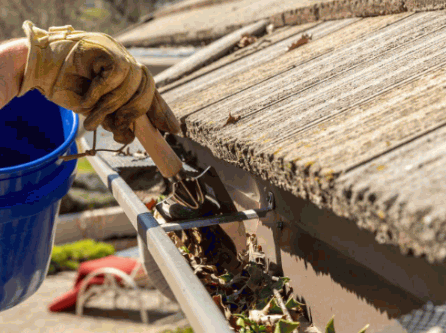
Trim Overhanging Tree Branches
Trimming overhanging tree branches represents a proactive measure in preventing potential roof damage, as falling branches and leaves can cause considerable wear and tear on roofing materials.
Plus the risk of physical damage, accumulated leaves, and debris on the roof can trap moisture, subsequently leading to mould growth and the deterioration of shingles over time. This combination of factors highlights the importance of regularly assessing the proximity of trees to residential structures.
Homeowners should consider the following maintenance recommendations:
- Regular Inspections: Schedule periodic evaluations to assess the health of nearby trees, monitoring for any signs of decay.
- Professional Pruning: Engage the services of an arborist to ensure that tree trimming is performed correctly, thereby promoting healthy growth and minimising associated risks.
- Maintain Distance: Ideally, trees should be planted at a safe distance from the residence to prevent future encroachments.
By implementing these strategies, homeowners can cultivate a healthy landscape while ensuring the integrity of their roofs, thereby avoiding costly repairs in the future.
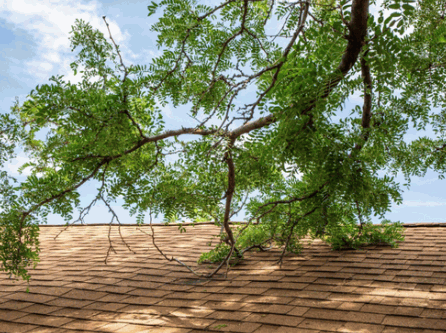
Repair Any Damaged Or Missing Shingles
Promptly repairing any damaged or missing tiles is essential for preventing roof leaks and maintaining the integrity of the roofing system.
Over time, exposure to adverse weather conditions can result in wear and tear on tiles, making regular inspections a necessity. It is advisable to examine the roof following significant storms or at least biannually, specifically for cracked, curled, or missing tiles. If damage is identified, it is crucial to address these issues promptly, as even minor defects can permit water infiltration into the roof structure.
To repair or replace tiles, it is important to first gather the necessary materials, including high-quality replacement tiles, a roofing hammer, and adhesive sealant. Carefully remove the damaged sections while ensuring that surrounding tiles are not further damaged. Install the new tile securely and apply adhesive around its edges for added protection.
Utilising high-quality roofing materials not only extends the lifespan of the roof but also enhances its performance against environmental stressors.
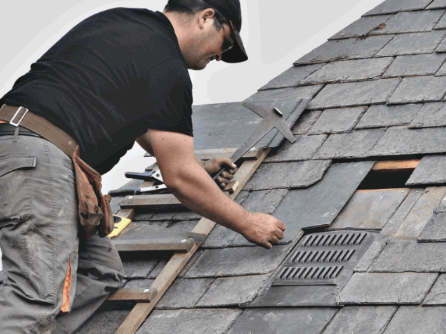
Properly Ventilate Attic Space
Proper ventilation of loft spaces is essential for the prevention of roof leaks, as inadequate ventilation can lead to moisture accumulation and subsequent roofing problems.
Ensuring optimal airflow within a loft is critical for maintaining the overall integrity of the roofing system. Effective ventilation plays a significant role in regulating temperature fluctuations, preventing heat buildup during warmer months, and reducing the risk of ice dams in winter. Homeowners are advised to routinely inspect their lofts for signs of inadequate airflows, such as condensation on rafters or the presence of mould growth.
To achieve ideal loft ventilation, consider the following key recommendations:
- Install soffit vents to facilitate the entry of fresh air.
- Consider ridge or gable vents for effective air outflow.
- Ensure that insulation is properly installed and does not obstruct airflow.
- Regularly clean vents to prevent blockages.
By adhering to these guidelines, individuals can protect their roofing investments while promoting a healthier living environment.
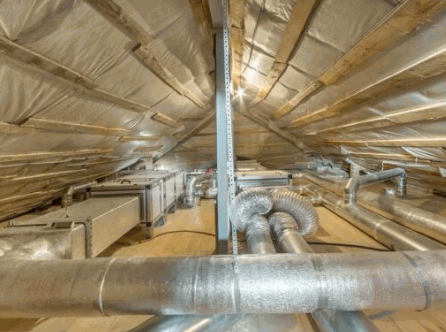
Consider Using A Waterproof Membrane
Utilising a waterproof membrane and roofing tar is highly advisable to enhance roof protection and prevent leaks, particularly in regions susceptible to moisture or heavy rainfall. These essential barriers not only safeguard structures from environmental elements but also significantly extend their lifespan, especially when incorporated into a comprehensive roofing maintenance plan.
Incorporating a waterproof membrane into roofing systems provides a variety of benefits, including improved energy efficiency, reduced maintenance costs, and increased property value. By preventing moisture intrusion, these membranes effectively shield the underlying structure from issues such as mould, rot, and other forms of damage caused by prolonged exposure to water.
There are several types of waterproof membranes available:
- Thermoplastic Membranes: Flexible, heat-welded sheets that demonstrate resistance to UV rays.
- EPDM (Ethylene Propylene Diene Monomer): A durable rubber membrane well-suited for diverse climatic conditions.
- TPO (Thermoplastic Polyolefin): A reflective membrane that enhances energy efficiency and is often used by professionals like Bill Ragan Roofing.
These membranes can be customised to fit any roofing system, whether commercial or residential, ensuring that moisture is effectively managed while maintaining structural integrity. Trade Coatings offers specialised solutions to enhance these systems.
By integrating waterproof membranes, property owners can achieve a more resilient roofing system, thereby reducing the likelihood of incurring costly repairs in the future.
Address Any Roofing Issues Promptly
Addressing roofing issues promptly is essential for preventing leaks and maintaining the long-term integrity of the roof.
Neglecting minor problems can escalate into more significant concerns, often resulting in costly repairs or even premature roof replacement. It is crucial for homeowners to remain vigilant and proactive in identifying potential roofing issues. This entails conducting regular inspections, particularly following severe weather events.
The following strategies can be employed to effectively identify and resolve roofing issues:
- Conduct Routine Inspections: Regularly examine the roof for missing tiles, signs of wear, or any unusual discolouration.
- Seek Professional Help: If any signs of damage are observed, it is advisable to consult a roofing professional for a comprehensive evaluation.
- Document Findings: Maintain records of any issues identified during inspections, as this will facilitate timely repairs and ongoing maintenance.
Swiftly addressing any identified problems not only safeguards the integrity of the roof but also enhances the overall safety and value of the home.
